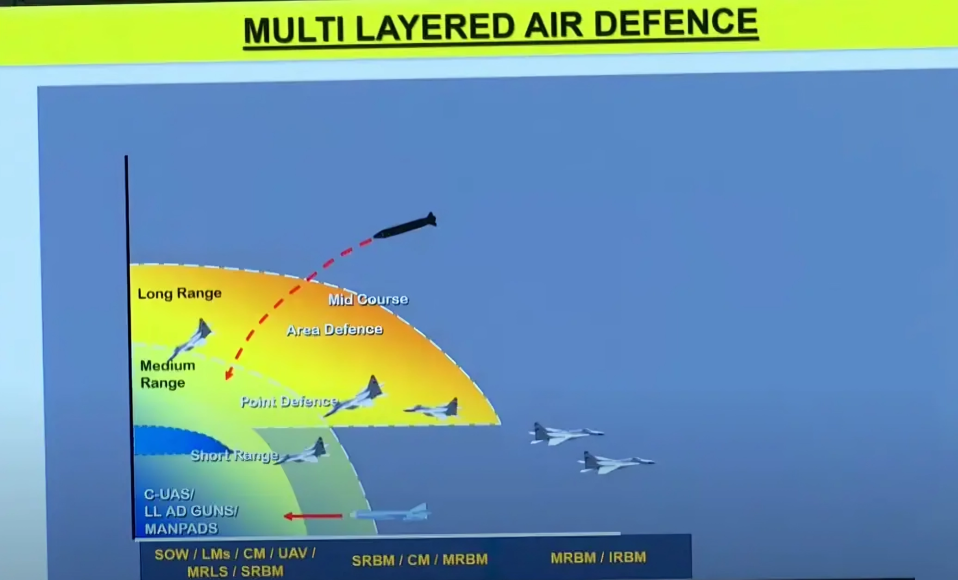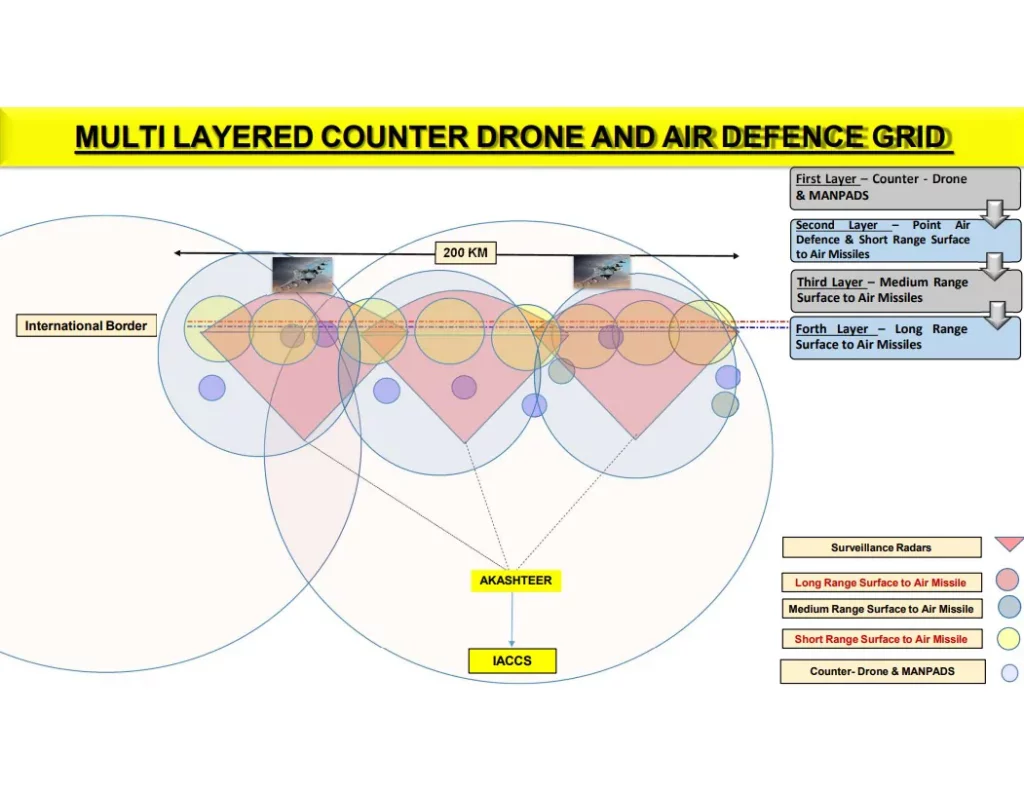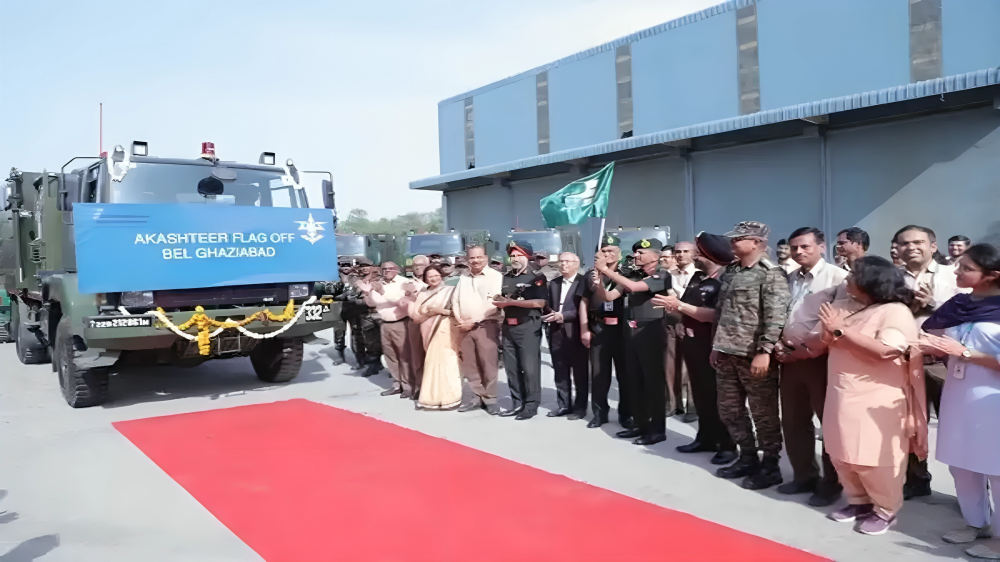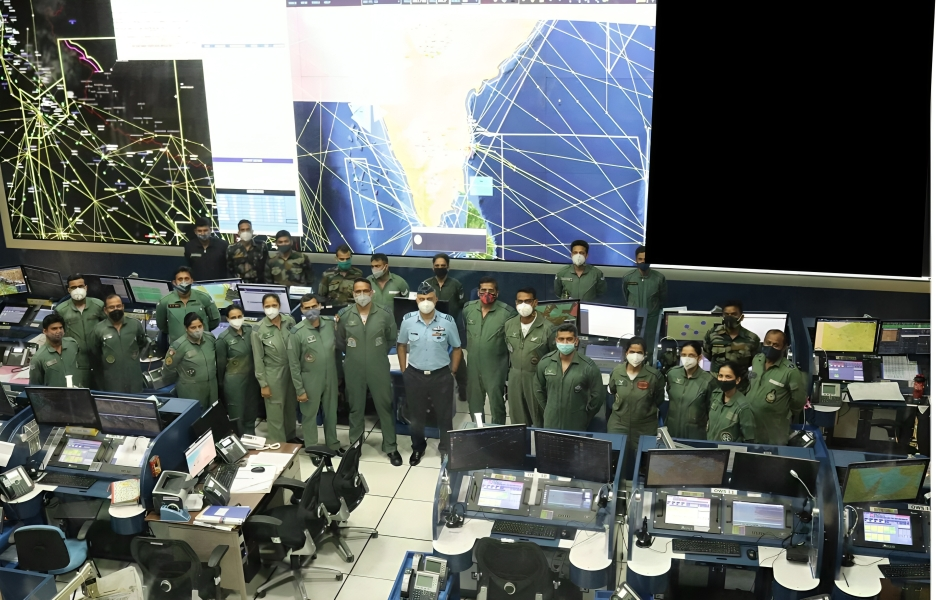India’s ability to safeguard its airspace and defend strategic installations during Operation Sindoor showcased the strength of its integrated air defence ecosystem. When Pakistan launched a coordinated attack involving swarms of drones, missiles, and rockets, India’s multi-tiered air defence systems swiftly detected, tracked, and eliminated the aerial threats.
At the heart of this robust shield lies the Integrated Air Command and Control System (IACCS) — an automated, net-centric warfighting network that synchronizes real-time data across all three services. This strategic nerve centre coordinates radars, fighter aircraft, unmanned systems, and missile batteries, giving commanders a comprehensive picture of the battlespace and enabling rapid, precise responses.
AFNET: The Backbone of Digital Warfare
The journey toward a network-enabled air defence began in 2010 with the launch of the Air Force Network (AFNET). Prior to this, communication relied on outdated troposcatter systems from the 1950s. AFNET replaced these with a secure, modern infrastructure that enabled seamless connectivity and faster decision-making in combat scenarios.
Former Defence Minister AK Antony, during the AFNET inauguration, outlined its dual purpose: enhancing national telecom capacity while modernising military communication systems to support network-centric operations. The real-time interception of simulated enemy targets during the launch event by MiG-29s from Punjab highlighted its operational potential.
This shift laid the foundation for the IACCS, allowing the Indian Air Force (IAF) to join the ranks of technologically advanced, NCW-capable forces globally.

IACCS: The Digital Brain of India’s Air Defence
The Directorate of IACCS was established in 2003, driven by the need to overhaul India’s battlespace coordination after the 1999 Kargil conflict. The first proposal for five IACCS units was initiated soon after, with Group Captain Ramamoorthy Venkatasubramanian serving as the first commanding officer.
Built upon AFNET, IACCS acts as a centralised control system that unifies inputs from ground-based and airborne sensors, including AWACS, radars, UAVs, and fighters. These inputs help generate a Recognized Air Situation Picture (RASP), providing commanders with a real-time view of the aerial domain. This situational awareness reduces the ‘sensor-to-shooter’ loop, enabling quicker, more effective responses.
In 2022, Defence Minister Rajnath Singh visited an IAF radar facility to review IACCS capabilities and operational readiness.
India’s Layered Air Defence Architecture
India’s air defence is structured in concentric rings designed to intercept threats at varying ranges:
- Inner Ring: Counter-UAS (C-UAS), legacy guns like the L70 and ZSU-23 Shilka, and MANPADS handle low-altitude, short-range threats such as drones.
- Second Layer: Point defence systems like Spyder, Pechora, and OSA-AK cover specific installations.
- Middle Tier: Medium-range SAMs like the indigenous Akash and the MRSAM, a joint Indo-Israeli development.
- Outer Ring: Long-range interceptors like the S-400 Triumf and combat aircraft provide area-wide air defence.
Also Read: Complete List of Air Defence Systems in India as of 2025
This entire ecosystem was activated during the events of May 8–10, when Pakistani drones and PL-15 missiles were effectively intercepted and destroyed.

Akashteer: Integrating Army’s Firepower
Akashteer is a cutting-edge initiative designed to automate air defense control and reporting processes by digitizing them. By integrating radar and communication systems at all levels into a unified network, Akashteer delivers an unprecedented level of situational awareness and control. The system’s control centers, designed to be vehicle-based and mobile, maintain operational capabilities even in challenging communication environments. This system facilitates the complete automation of air defense operations and significantly enhances India’s air defense posture.
A major recent milestone is the integration of the Indian Army’s Akashteer air defence system — developed by Bharat Electronics Limited (BEL) — into the IACCS network. Operated by the Army Air Defence Corps, Akashteer enhances the coordination of ground-based assets, allowing a unified response alongside the IAF’s assets.

Lt. General Rajiv Ghai, Director General of Military Operations, used a cricket analogy to describe the synergy of India’s defence grid, likening it to the iconic 1970s Ashes series: “If Lillee doesn’t get you, Thommo must.” Similarly, India’s layered AD structure leaves no escape for intruding threats.
Around 400 command-and-control centres have been ordered for Akashteer, with over 100 already delivered. Full integration with IACCS is expected by the end of the year, according to Army Chief General Upendra Dwivedi.

Toward a Unified Air Defence Command?
While former Chief of Defence Staff General Bipin Rawat had proposed a unified Air Defence Command (ADC) integrating the assets of all three services, progress has been slow due to logistical challenges and command structure complexities. However, the synergy demonstrated during Operation Sindoor proves the growing cohesion across forces.
The Indian Air Force’s doctrine emphasises the need for fast kill chains, seamless C2 integration, and short sensor-to-shooter loops. These goals are increasingly being realised through digital technologies like Operational Data Links (ODL), SATCOM, and Software Defined Radios (SDR).
Conclusion
Operation Sindoor marked a decisive moment in India’s evolution into a technologically superior air power. The integration of IACCS, AFNET, Akashteer, and multi-layered defence assets represents a significant stride in India’s preparedness against modern aerial threats.
India’s skies are now guarded not just by missiles and jets, but by a digital fortress powered by real-time data, intelligent networks, and joint-force synergy — a true Guardian of the Sky.













